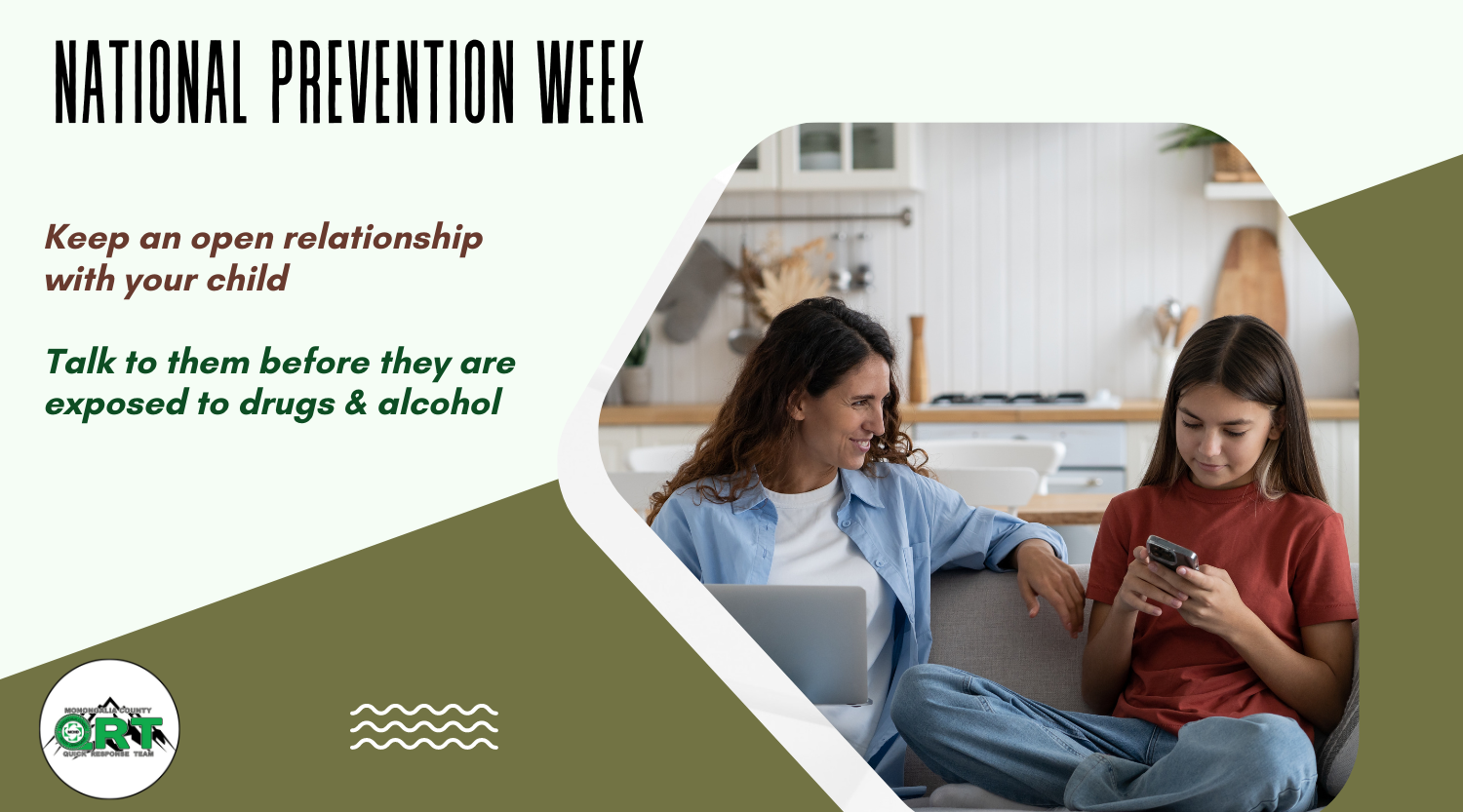Putting "prevention" into the drug misuse dialogue

May. 10, 2023
By Mary Wade Burnside
As National Prevention Week begins today, our community has a recent and grim reminder of how tragic substance misuse can be.
Members of the Monongalia County Quick Response Team (QRT), organized by and funded through grants obtained by Monongalia County Health Department, were informed on Friday, April 21, of a spike alert in Columbus, Ohio that caused 19 overdoses and one death in a 24-hour period.
A predictive model had a similar situation happening in the Morgantown area in the next three days.
It only took one. On that Friday night, five individuals overdosed; two died. And, while we’re still waiting for the official medical examiner reports, from April 21 through April 30, there were 22 suspected overdoses in all, with four fatalities.
One reason overdoses have become so frightening is because recreational drugs are now sometimes contaminated with fentanyl, a highly potent synthetic opioid. Individuals who take drugs that contain fentanyl are often unaware of its presence and its potency.
Elizabeth Shahan, executive director of West Virginia Prevention Solutions, an independent, non-profit group based in Clarksburg, notes that while media reports have used the word “laced,” implying intention, that WVPS prefers the word “contamination.” This is because the individuals dealing different substances are probably not using gloves and using the same caution that a pharmacist would while handling drugs.
“Contamination happens,” Shahan said. “There is no control there, so the likelihood of contamination is high.”
And then, young people, perhaps teenagers, some of whom might be sampling something in the same way previous generations have, might end up with a very different experience. “Before, maybe it wasn’t a big deal, but now that’s pretty scary now,” she said. “It’s so challenging, because a first could be a last.”
According to the Centers for Disease Control and Prevention (CDC), fentanyl is 50 to 100 times stronger than morphine. Furthermore, rates of overdose deaths involving synthetic opioids other than methadone, which includes fentanyl, increased more than 56% from 2019, the year the Monongalia County QRT was established, to 2020. The spike continued during the COVID pandemic.
In an effort to combat opioid overdoses, QRT members have focused on training individuals how to use naloxone, which reverses the side effects of an opioid overdose. Additionally, we distribute not only naloxone but also fentanyl test strips, which will alert the user to the presence of the deadly opioid.
The Monongalia County QRT makes every effort to meet individuals where they are. This includes cultivating relationships with those who have overdosed to get them services as well as treatment, and also getting naloxone and fentanyl strips into the hands of community members who can use them.
But, of course, prevention is another goal. One way West Virginia Prevention Solutions approaches convincing young people not to start using or misusing substances in the first place is to find evidence-based curricula that is aimed at rural students, not those in larger cities, while collaborating with individual schools as well as school systems.
“We make sure we have a couple different curricula that speaks to the importance of small community living, the importance of knowing your next door neighbor and extended family in an individual child’s life,” Shahan said. “It’s Appalachian culture. Aunts, uncles and grandparents are part of what we do. Communities grow children.”
As noted by the National Institute on Drug Abuse, early drug use increases a person’s chances of becoming addicted. Another resource is SAMHSA, which has created a list of tips for parents on ways to keep their children from going down the drug and alcohol misuse road to begin with.
These include maintaining a strong and open relationship and talking to kids about drugs and alcohol and drugs before they are exposed. For more tips, you can visit SAMSHA's website.
The Monongalia County QRT will continue to help those who overdose and who are in recovery, in addition to highlighting ways to prevent drug misuse to begin with. But that initial line of communication from parents and schools is a big help.
Mary Wade Burnside is the public information officer at Monongalia County Health Department.